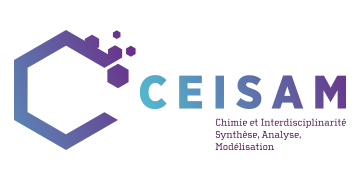A research team (1) from the CEISAM laboratory (Chemistry and Interdisciplinarity: Synthesis, Analysis, Modelling – Nantes University/CNRS) has developed a new approach for studying biological samples using nuclear magnetic resonance (NMR). This breakthrough opens up a wide range of prospects, both in terms of analytical chemistry developments and applications in many other fields (personalized medicine, industry, agri-food, etc.). The research has just been published in the journal Angewandte Chemie.
Nuclear magnetic resonance (NMR) spectroscopy is an exceptionally precise analytical tool capable of detecting and quantifying dozens or even hundreds of small molecules present in samples of biological interest, such as biofluids (blood, urine, etc.), cell or plant extracts, etc.
Based on the magnetic properties of atomic nuclei, NMR is one of the two main analytical approaches for metabolomics, which aims to obtain the most accurate and broadest possible mapping of the small molecules involved in the chemistry of living organisms.
However, NMR faces a major limitation: this spectroscopic technique is unable to detect the signals of molecules when they are too diluted, which is often the case in biological samples. This limitation is even truer in the case of carbon-13 NMR spectroscopy, a technique that is essential for characterizing the structure of molecules. Until now, this technique could not be used in metabolomics because its sensitivity is even more limited than that of the proton.
A major breakthrough: rich spectral signatures obtained on urine samples
The analytical chemistry team in the CEISAM laboratory has succeeded in removing this obstacle through a thesis led by Victor Ribay as part of the ERC SUMMIT project led by Professor Patrick Giraudeau. The researchers from Nantes have developed an approach based on dynamic nuclear polarization that makes it possible to obtain spectral signatures of biological samples using carbon-13 NMR spectroscopy, despite the low natural abundance of this nucleus. For the first time, spectra were obtained from urine samples revealing extremely rich spectral signatures. The researchers were thus able to show that this new approach could determine the concentration of metabolites that were previously difficult to quantify using conventional NMR approaches.
These results, recently published in the journal Angewandte Chemie, open up a wide range of prospects, both in terms of the development of analytical chemistry and its application to many other fields in which NMR metabolomics is a key approach (personalised medicine, study of human, cellular, bacterial or plant metabolism, food science).
(1) The MIMM team (Magnetic Resonance, Isotopomics, Metabolomics, Monitoring) is UMR CEISAM’s analytical chemistry team. It is closely linked to CEISAM’s NMR platform, which is part of the Corsaire platform within the interregional Biogenouest network and the MetaboHub national infrastructure.

